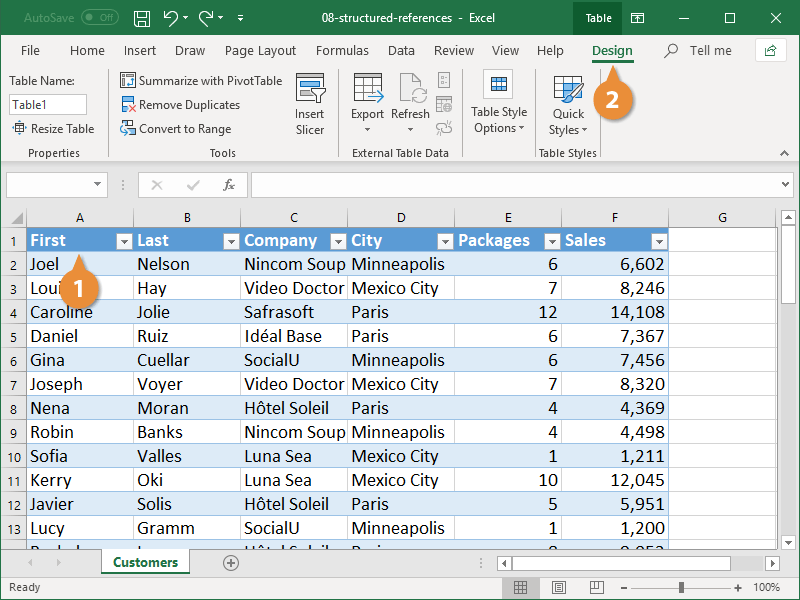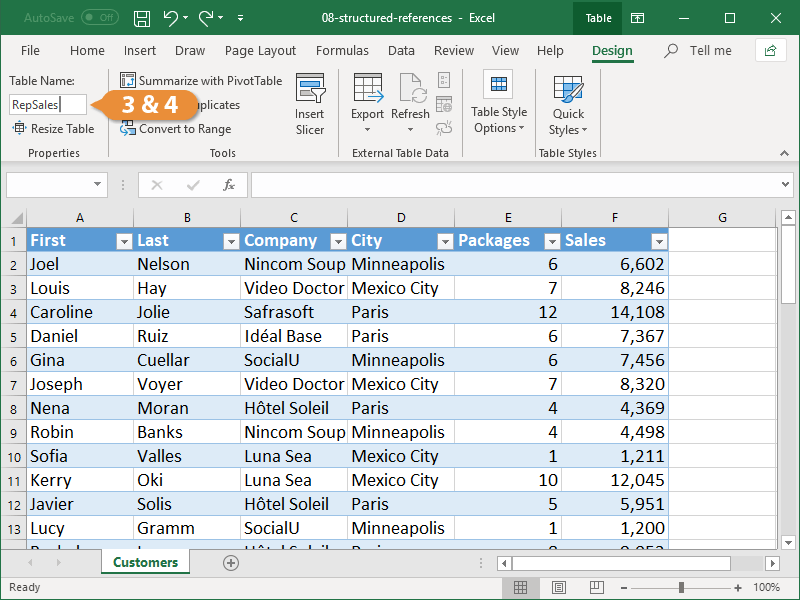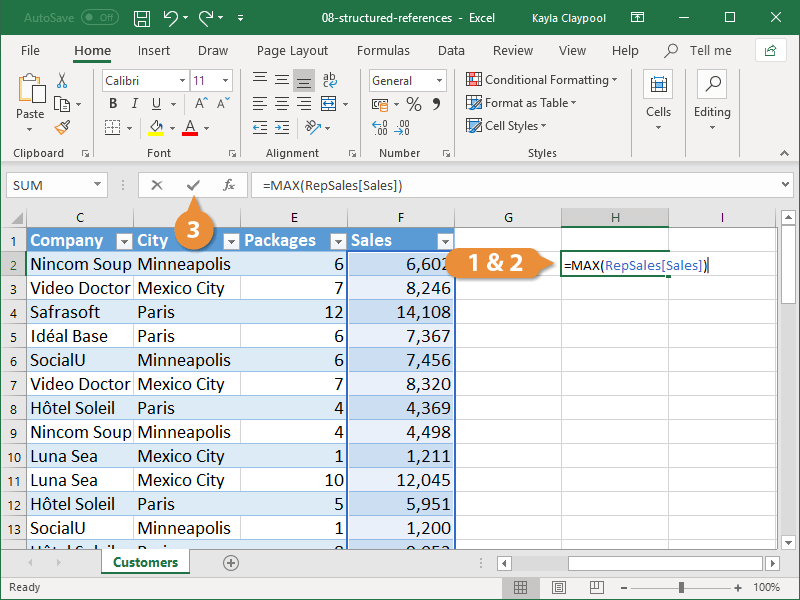Structured references allow you to easily work with cell references and formulas in a table. For example, instead of using a cell range reference such as F2:F52 in a formula, you can refer to the cell range as Sales (the table column name). They make it easy to see, at a glance, what the formula is calculating.
When you create a formula using structured references, you can use several different elements in place of the regular arguments. These include the table name, column header names, or special items that refer to areas of the table, such as a total row.
Structured references work best if the table is assigned a meaningful name.
- Select a cell in the table.
- Click the Design tab.
- Click in the Table Name field.
- Type a table name.
- Press Enter on your keyboard.
When using structured references, the formula will include the table name as well as the name of the row or column you want to calculate.
- Select the cell where you want to add the structured reference.
- Type the formula using table names instead of cell references.
- Click the Enter button or press Enter on your keyboard.



